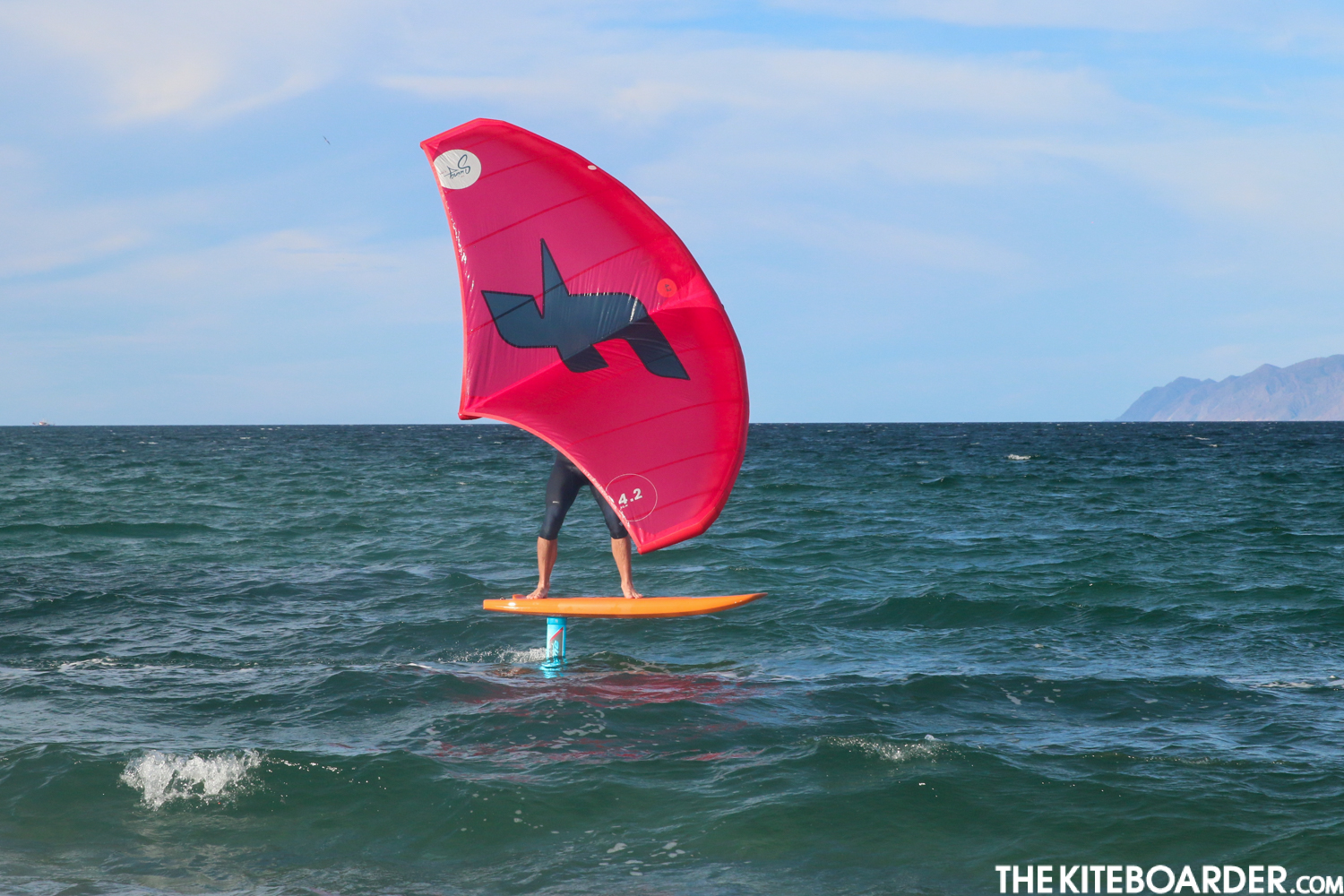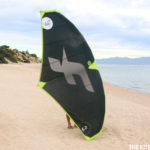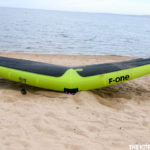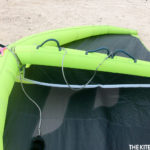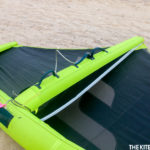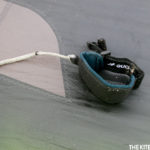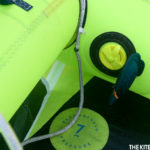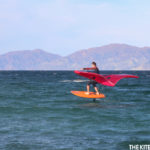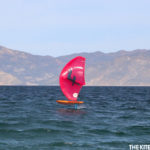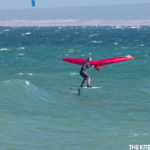Sizes Available: 2.2, 2.8, 3.5, 4.2, 5, 6m
Sizes Tested: 4.2, 6m
F-ONE Says:
An incredible new way to fly and experience new feelings on the water, once you try it, you’ll be addicted. 100% Depower and totally safe. High-end construction, launch anywhere, even busy or gusty spots. Wide wind range with five sizes for different conditions. Easy to learn and very accessible.
The all-new Swing from F-ONE, a light, compact and totally safe handheld kite you can launch anywhere. Using our extensive kite design techniques, we have created the Swing to be stable, fun to use, and most importantly, easy to learn. There are no lines to get tangled, no danger of getting dragged, and there is genuinely 100% depower: Get ready for a totally new way to enjoy the wind.
Visit for more info: https://www.f-one.world/product/swing/
TKB Says:
The F-One Swing was one of the first inflatable wings to hit the market and has been one of the most popular wings in use in North America during the first year of wingsurfing. The F-One canopy is very simple with no windows or high-tech features that add weight to its overall build, and this decision yields the lightest wing available for purchase. The Swing uses F-One’s Reactor inflation valve which offers a high flow connection that twist locks the pump hose to the kite for easy and super-fast inflation and deflation at the push of a button. Because the Swing features a leading edge that falls on the smaller diameter of things, we like to pump this wing up to the edge of the recommended inflation pressure to ensure crisp performance. The Swing features a very minimal and simple handle layout with one handle mounted mid-way on the leading edge, a single front hand handle and then two back handles; one serves as a transition handle with the farthest back handle being the proper tuning handle. The Swing is the only wing on the market so far that has a harness loop, which allows riders to wear a harness and hook a plastic-coated harness line that dangles from the inflatable boom into your harness hook. The F-One Swing features a medium diameter thickness leading edge and a slightly larger boom with a luff strut that connects the top of the boom to the canopy. The luff strut allows the Swing to have a deeper profile in the canopy while the wingtips have tighter/flatter canopy tension. The Swing uses a spectra leash with a bungee and a wrist leash that remains connected in a loop, and requires the rider to cinch the loop tighter with a Velcro strap.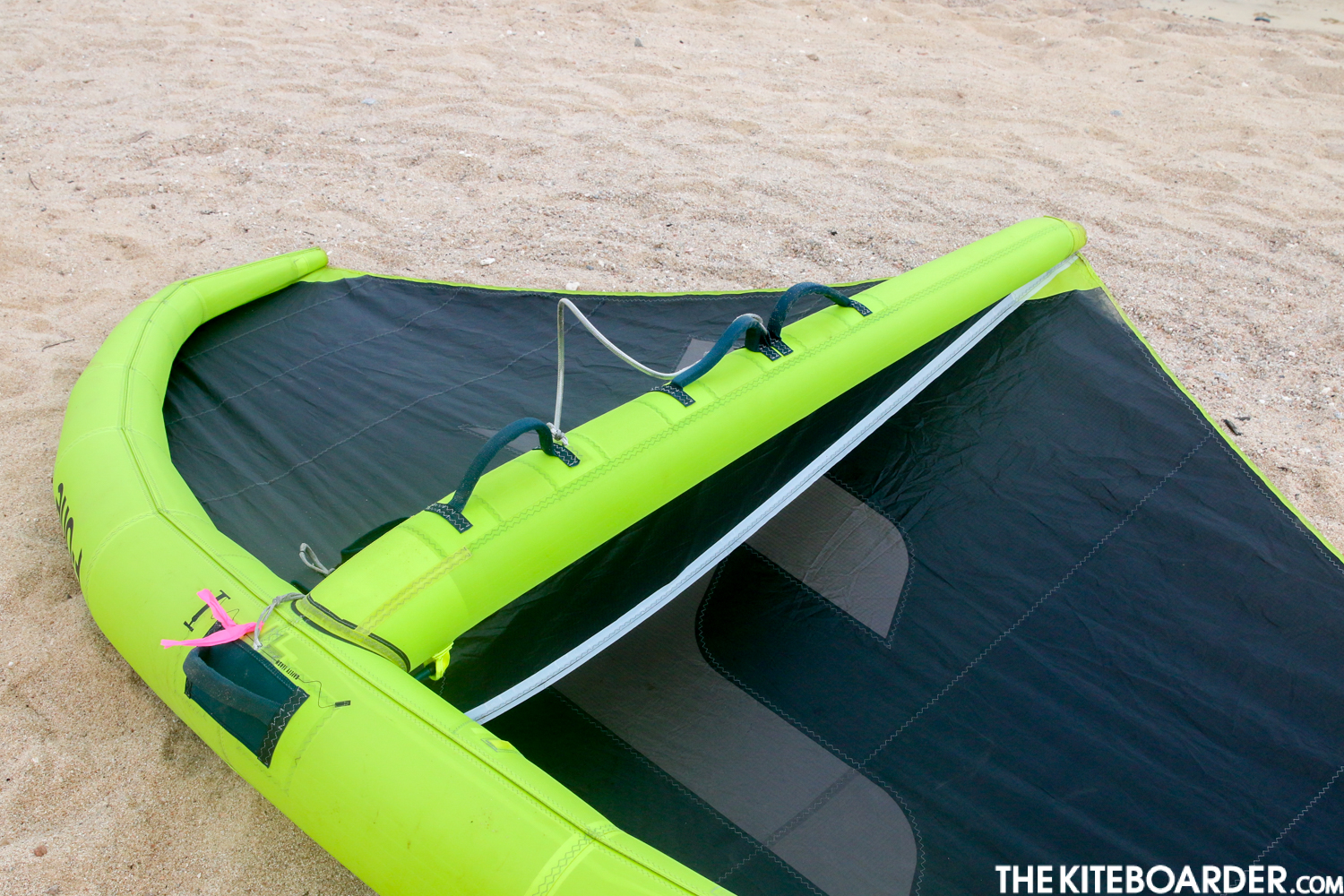
The first thing we noticed about the F-One Swing is its remarkable low weight which you can feel while handling it on the beach, waterstarting, and most importantly, when you put the wing in hover mode and begin riding swell. Since wingsurfing is a finesse sport, wings lack the large power range you have with kites, so weight is a very important performance criteria. The F-One design brief put low weight above all else by offering a pure performance-based product that dispenses with three-letter acronym techy features, skips the see-through window and places handles only where you need them. What you get is a highly responsive wing that is easy to handle and proves helpful to the beginner as well as the intermediate lawn mower, but lastly and most importantly, to the surf/windswell minded advanced riders.
The handles are placed in perfect locations, encouraging simple handwork from waterstart to upwind riding, while keeping the hand movement in and out of hover very simple. The control handles on all the F-One wings are placed in good tuning/balance positions (they’d better because you’re stuck with the designated locations) and the handles have an excellent feel which encourages longer sessions. The webbing has an EVA foam square inserted into the middle of the webbing which gives the handle a round 3D surface which leads to a more comfortable grip and ultimately, less hand fatigue. The diameter of the webbing is much narrower than other products and we like how this feels on our hands. During the course of testing, we did discover that multiple handles do allow you to extend your arm spread on the boom which can lead to straighter arms and less fatigue. You don’t get this feature with the Swing, but if arm fatigue is a problem you do get a harness line. We put the harness line to good use, flying effortlessly upwind and then turning downwind to start our hover business with fresh arms. The safety leash attachment features a lightweight spectra line embedded with a bungee to keep the leash out of the way of your hands. We loved the leash cinch strap which we think is the easiest and safest wrist leash on the market so far. Once you inflate the wing, it is ready to fly away, so the easier it is to put the leash on your arm the better. In our case, we often swap wings out on the water and losing a wing a 1/4 mile offshore is no laughing matter. The cinch strap allows you to secure the wing with one hand and slip your other hand safely into the loop with confidence. In our experience, open-ended Velcro leashes require great machinations with two hands to close them. 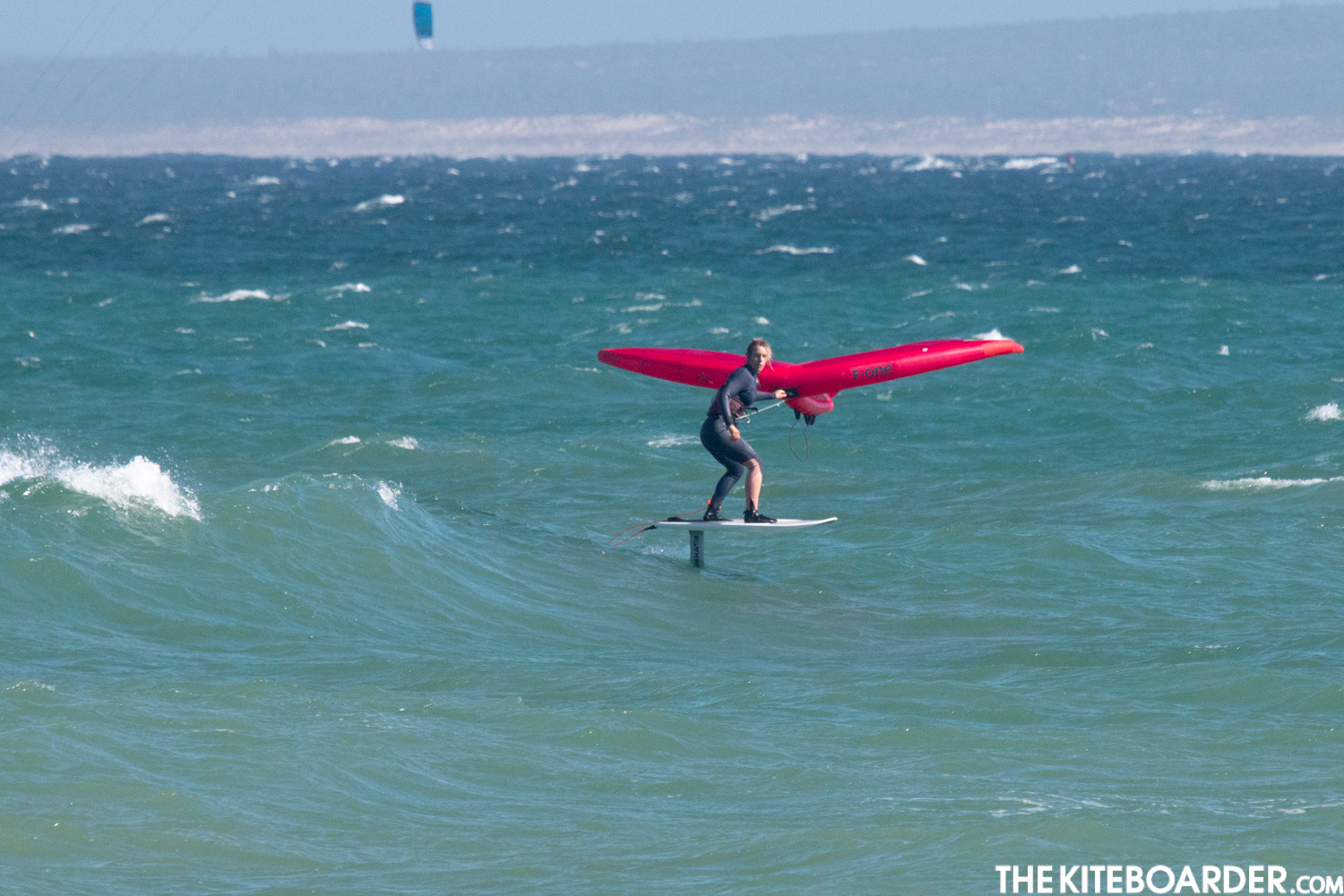
The F-One Swing offers a deep profile in its canopy which seems to deliver a wider range of power. The wing generated a bit more lower end power than some of the other flatter wings in the test, which means the wing tends to float a little bit more when it is neutral sheeted and it has more of a gradual power delivery that feels really intuitive. The F-One Swing seems to still build power when the user doesn’t tune/sheet the wing in properly which makes it a bit more user-friendly and less on/off in terms of power delivery. Its deeper profile also seems to give you a little less upwind angle, which means when you are edging hard upwind you will feel the deeper profile stalling out at deep angles. Indeed, there is a trade-off between luxurious power and control with pure upwind angles. The deeper profile also makes the Swing float a bit more when in hover mode which means you can focus less on the wing when you’re seeking out windswell troughs on downwinders. Many people commented about the design’s stability, which seems to describe how the wing tracks on the yaw axis and the Swing seems to feel really stable in that regard. Wings can feel twitchy, such that they restlessly rock from side to side or want to flip over in the water easily, which requires greater focus to control directionality (yes, the industry has created another product that has yaw, pitch and roll axes). The Swing seems to be really stable in this regard.
The freshman effort of the F-One team seems to have landed solidly on the nose with a focus on lightweight build and finely tuned performance that gives you a wing that works well for riders of all skill levels from beginner to professional (Ha”¦ professional wingsurfer”¦that’s a funny joke). It’s important to remind ourselves how the historical innovation curve of kiteboarding played out over the first 10 years, which means there is much left to discover here, but it is our editorial opinion that the F-One Swing is the gold standard of wingsurfing’s start.
Visit for more info: https://www.f-one.world/product/swing/

Want to view all our 2020 Freeride, Light Wind and Wingsurf Gear Reviews in one convenient digital guide? Get free access HERE. If you’re already a subscriber, thank you for your support! Log into your account to view our 2020 Freeride Gear Review Guide.



